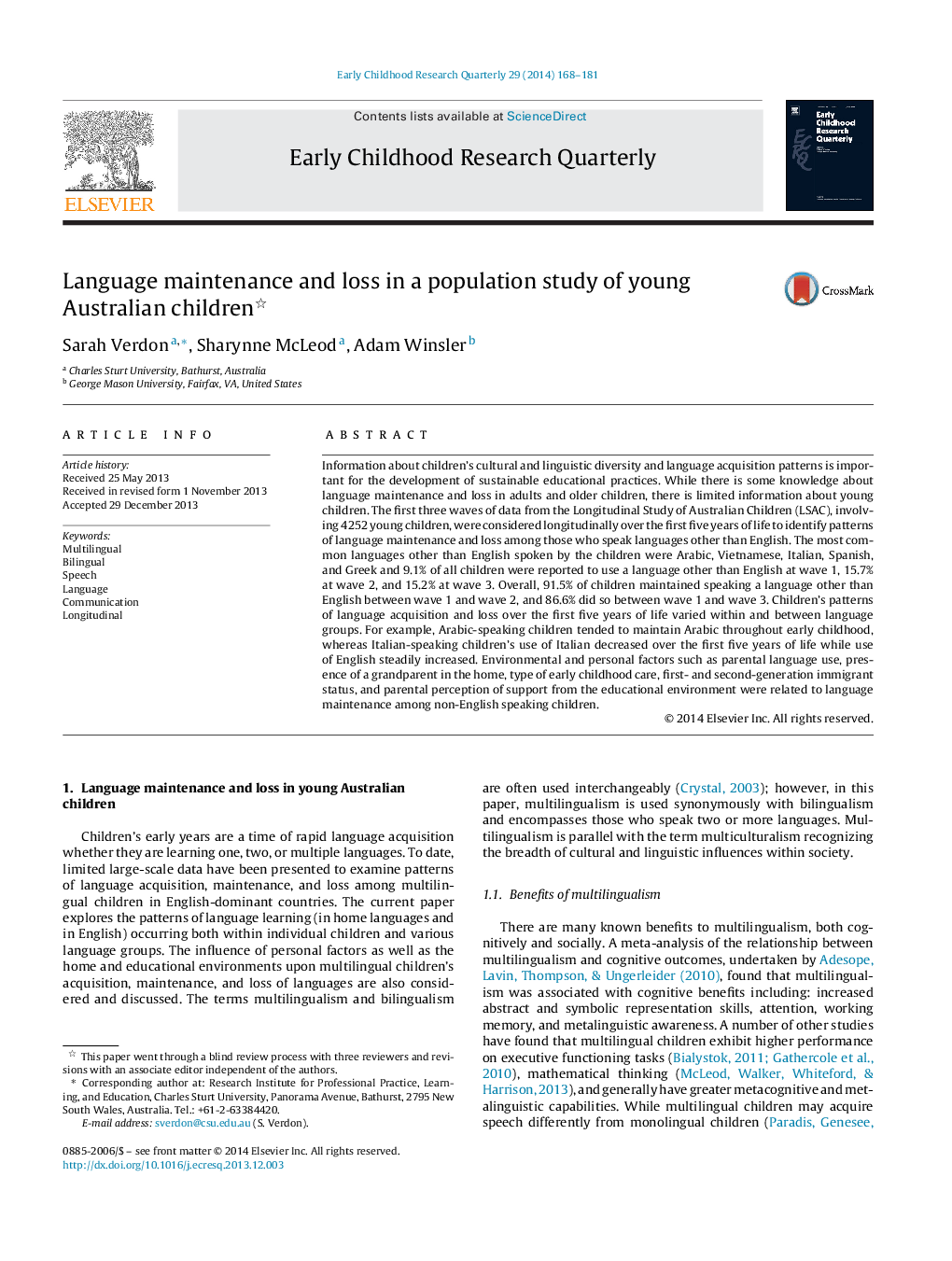| کد مقاله | کد نشریه | سال انتشار | مقاله انگلیسی | نسخه تمام متن |
|---|---|---|---|---|
| 353906 | 618952 | 2014 | 14 صفحه PDF | دانلود رایگان |
• Language maintenance and loss of 4252 young Australian children is described.
• The most common languages spoken after English were Arabic, Vietnamese, Italian, Spanish and Greek.
• Longitudinal analyses showed a decline in home language use across early childhood.
• Children's patterns of language acquisition and loss over the first 5 years of life varied within and between language groups.
• Migrant status and type of early childhood care were significantly related to language maintenance among non-English speaking children.
Information about children's cultural and linguistic diversity and language acquisition patterns is important for the development of sustainable educational practices. While there is some knowledge about language maintenance and loss in adults and older children, there is limited information about young children. The first three waves of data from the Longitudinal Study of Australian Children (LSAC), involving 4252 young children, were considered longitudinally over the first five years of life to identify patterns of language maintenance and loss among those who speak languages other than English. The most common languages other than English spoken by the children were Arabic, Vietnamese, Italian, Spanish, and Greek and 9.1% of all children were reported to use a language other than English at wave 1, 15.7% at wave 2, and 15.2% at wave 3. Overall, 91.5% of children maintained speaking a language other than English between wave 1 and wave 2, and 86.6% did so between wave 1 and wave 3. Children's patterns of language acquisition and loss over the first five years of life varied within and between language groups. For example, Arabic-speaking children tended to maintain Arabic throughout early childhood, whereas Italian-speaking children's use of Italian decreased over the first five years of life while use of English steadily increased. Environmental and personal factors such as parental language use, presence of a grandparent in the home, type of early childhood care, first- and second-generation immigrant status, and parental perception of support from the educational environment were related to language maintenance among non-English speaking children.
Journal: Early Childhood Research Quarterly - Volume 29, Issue 2, 2nd Quarter 2014, Pages 168–181
